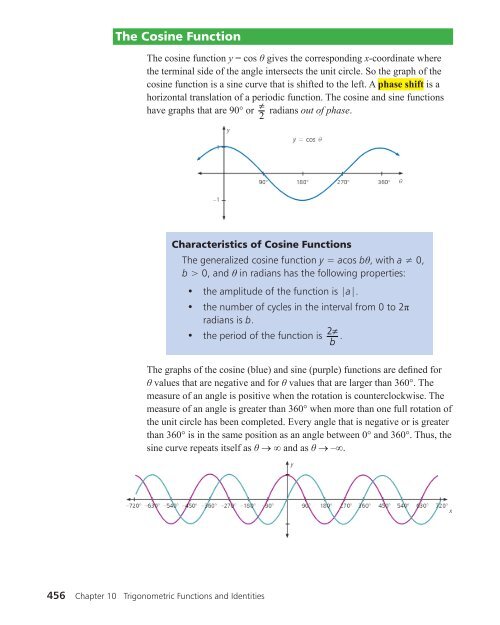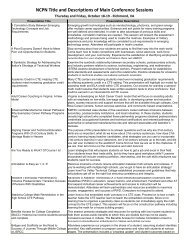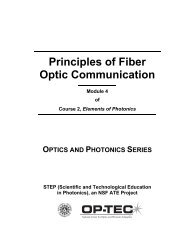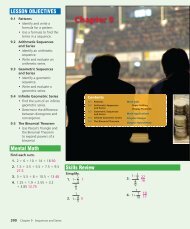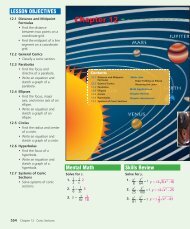Chapter 10 - NCPN
Chapter 10 - NCPN
Chapter 10 - NCPN
Create successful ePaper yourself
Turn your PDF publications into a flip-book with our unique Google optimized e-Paper software.
The Cosine Function<br />
The cosine function y = cos θ gives the corresponding x-coordinate where<br />
the terminal side of the angle intersects the unit circle. So the graph of the<br />
cosine function is a sine curve that is shifted to the left. A phase shift is a<br />
horizontal translation of a periodic function. The cosine and sine functions<br />
have graphs that are 90° or ≠ radians out of phase.<br />
2<br />
Characteristics of Cosine Functions<br />
The generalized cosine function y = acos bθ, with a ≠ 0,<br />
b > 0, and θ in radians has the following properties:<br />
• the amplitude of the function is |a|.<br />
• the number of cycles in the interval from 0 to 2π<br />
radians is b.<br />
• the period of the function is 2≠ b .<br />
The graphs of the cosine (blue) and sine (purple) functions are defined for<br />
θ values that are negative and for θ values that are larger than 360°. The<br />
measure of an angle is positive when the rotation is counterclockwise. The<br />
measure of an angle is greater than 360° when more than one full rotation of<br />
the unit circle has been completed. Every angle that is negative or is greater<br />
than 360° is in the same position as an angle between 0° and 360°. Thus, the<br />
sine curve repeats itself as θ → ∞ and as θ → –∞.<br />
456 <strong>Chapter</strong> <strong>10</strong> Trigonometric Functions and Identities


